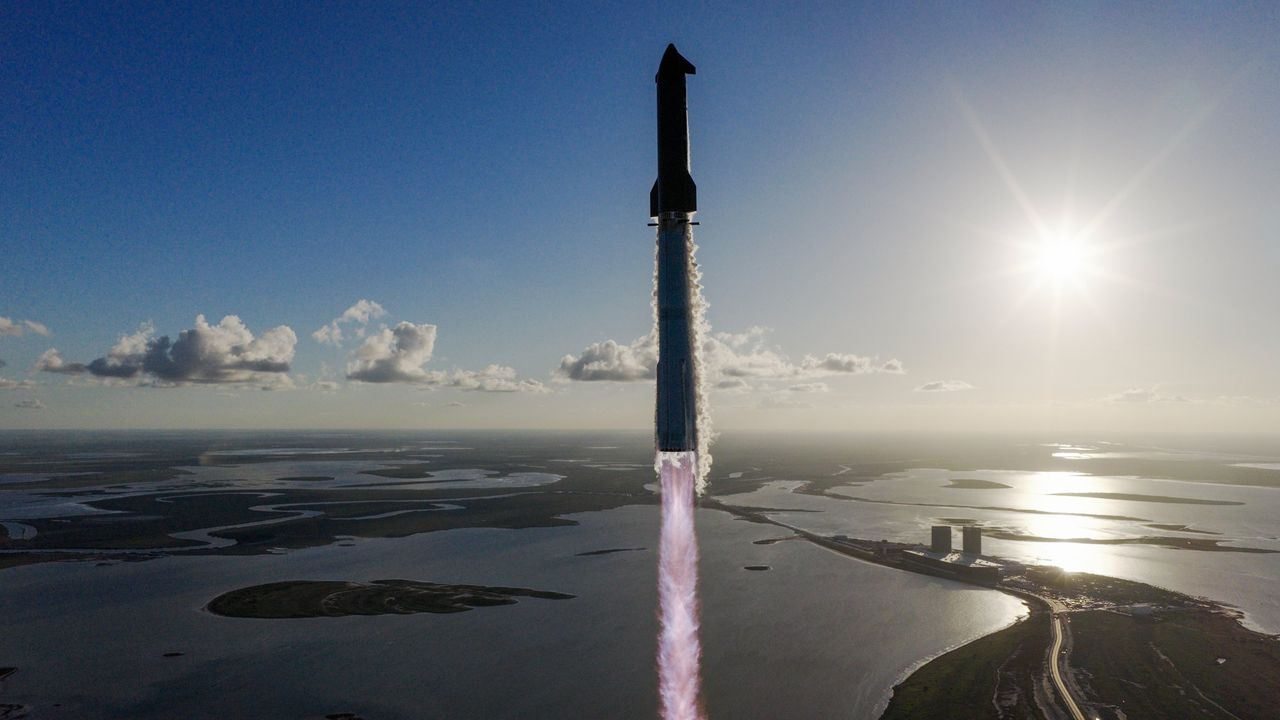SpaceX successfully launched the 11th test flight of its Starship on October 13, 2023, marking a significant milestone for the ambitious aerospace company. The launch took place at the Starbase facility in South Texas, where the 403-foot-tall (124 meters) rocket ascended into the sky and completed a suborbital flight. Both components of Starship—the Super Heavy booster and the upper stage, known as “Ship”—returned to Earth for controlled splashdowns, demonstrating operational effectiveness.
The successful Flight 11 is a pivotal moment not only for its technical achievements but also as the final flight of Starship’s “Version 2” variant. In a statement following the launch, SpaceX emphasized that focus is now shifting towards the next iteration of Starship, designated as Version 3. The new models are currently under construction and will be prepared for upcoming tests.
Preparing for the Future with Starship Version 3
Starship Version 3 will be slightly taller than its predecessor, measuring an additional 5 feet (1.5 meters). Although its external appearance will resemble Version 2, significant upgrades are planned. According to SpaceX spokesperson Dan Huot, the propulsion system will be revamped to integrate the new Raptor 3 engines, which offer enhanced power. The Super Heavy booster will maintain its configuration with 33 engines, while the Ship will feature six.
Huot outlined other improvements, including enhanced energy storage, upgraded avionics, and new docking adapters intended for in-space fuel transfers. These upgrades are crucial for deep-space missions, where upper stages will launch with minimal fuel and rendezvous with tanker ships to refuel before continuing to destinations like the Moon or Mars.
The Version 3 Super Heavy will also introduce a redesigned fuel transfer tube, allowing for more efficient delivery of cryogenic propellants to the engines. Additionally, it will have three grid fins, which are essential for guiding the booster back to Earth, instead of the four found on Version 2. These new grid fins will be larger and stronger, enhancing the vehicle’s control during descent.
Upcoming Challenges and Ambitious Goals
Future launches are set to take place from Pad 2 at Starbase while the original Orbital Launch Mount undergoes upgrades. Lead propulsion engineer Jake Berkowitz stated that enhancements include installing a new orbital launch mount and a flame trench system, as well as modifications to the chopstick arms that will capture the vehicles post-launch.
Looking ahead, Version 3 of Starship is expected to be capable of missions to Mars. Elon Musk, founder and CEO of SpaceX, indicated that the company aims to send a fleet of uncrewed Starships to the Red Planet during the next optimal launch window, which occurs in late 2026. This timing aligns with the planetary positions that facilitate interplanetary travel.
In the long term, SpaceX has even greater ambitions for a fourth version of Starship, which will stand at an impressive 466 feet (142 meters) and be equipped with 42 Raptor engines. This Version 4 is anticipated to debut in 2027, coinciding with NASA’s plans for the Artemis 3 mission, which aims to land astronauts on the Moon for the first time since the Apollo era. The Starship upper stage will serve as the lunar lander for this landmark mission.
As SpaceX continues to push the boundaries of space exploration, the successful Flight 11 serves as a stepping stone toward achieving its vision of a fully reusable spacecraft capable of supporting human travel to the Moon, Mars, and beyond. The future of space travel appears brighter than ever with the advancements made during this recent test flight.
